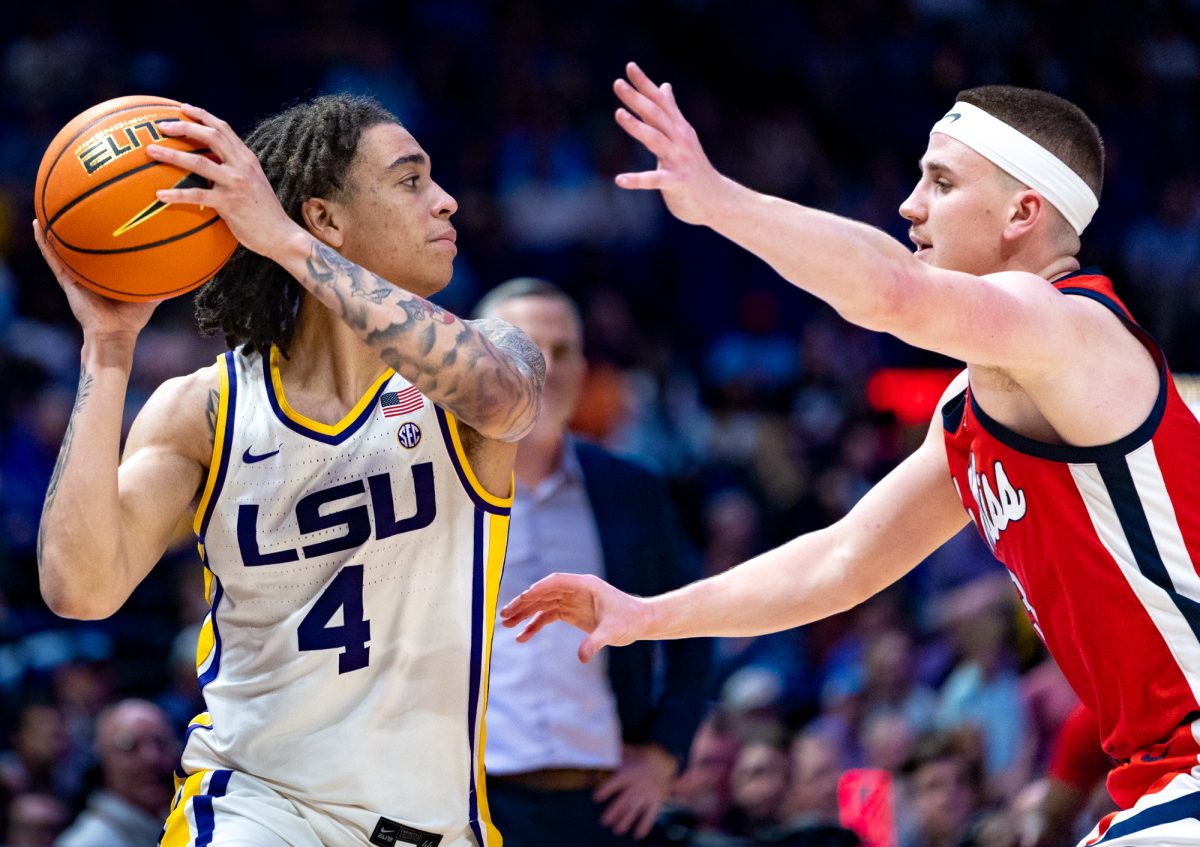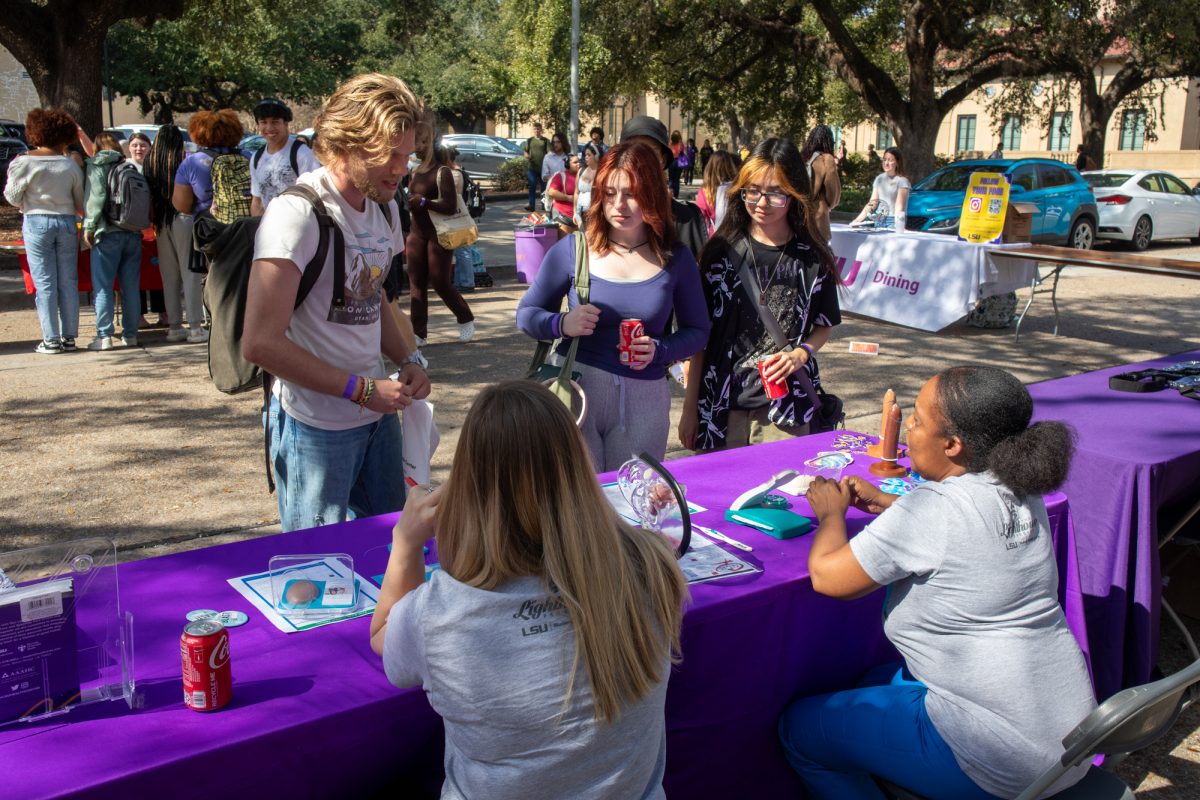var uslide_show_id = “4c8245ea-75f0-467f-bec0-6fec76d5afd8”;var slideshowwidth = “468”;var linktext = “Click here to see more photos of N.C. State’s Second Life presence.”;
The DELTA team needed to make a decision.
It was mid-June and several staff members from the division, known more formally as Distance Education and Learning Technology Applications, sat around a table discussing how their most recent project would move forward.
The team had many of the pieces already. It already owned an island, much to the surprise of the accountants. It already had permission to build. It already had a goal of constructing an entirely new N.C. State campus.
All they needed was an idea of what it would look like — and Ilana Marks had a good one.
Check out Tyler’s blog entry here.
But Marks, a senior in art and design and textile technology, had a philosophy vastly different from that of most designers — in the real world anyway. That’s because the DELTA team would be constructing this campus in Second Life, an online virtual world where users from all over the world can create characters and interact. In the case of the University, students could use the space to enhance distance education classes as another online tool.
“There’s no reason to make what we’ve already seen,” Marks said. “Pixels are free.”
A ‘Jetson’s sort of world’There are more than 100 universities in the Second Life universe, Marks said. That figure includes UNC-Chapel Hill, which sports a photorealistic version of its campus on its very own island.
That was an option for the design team at DELTA. But although Marks said UNC-CH’s example is a beautiful one, she said the team didn’t really feel it would work for NCSU’s version.
“We’ve seen that before. We felt like it would be exciting to take it to another level since you can do things in a virtual world that you can’t do in the real world,” Marks said. “Why not push that and see what you can do?”
What resulted was a combination of the Second Life design philosophy of open spaces and a vision of the future of campus. It’s a ‘futuristic, Jetsons sort of world,’ Marks said, with bright colors and a space-age feel.
Although Marks said her initial concept drawings were ‘almost a little cheesy,’ the other two DELTA team members jumped at the idea, adding input of their own.
“You have an idea and everybody says, ‘Wow’ — that’s the one you have to go with,” Marks said.
Marks said the futuristic design also meant the larger team could be more creative with the concept, since photorealistic graphics are less like design and more like translation.
But the open feel of the “Wolflands” — the Second Life name for the island — is more than just a visual. It’s also necessary for the mechanics of the game itself.
Characters in the game, or avatars, can move around the environment by walking, but it’s often slow, especially in larger environments. So Second Life programmers have given users the ability to fly, and although that bestows a much-coveted superpower, it can cause problems when walls and doors are concerned.
“My poor avatar is so clunky,” Marks said, pointing out that her character spends more time running into walls than anything else.
To get around this, buildings in the Wolflands have large open spaces where users can enter and exit freely.
Marks said that although faculty members have been quick to embrace the visual design of the island, the DELTA team has to act like the “homeowner’s association,” enforcing some degree of consistency among the colleges that have already participated. This is something they had to do with the College of Management, which built a fairly close to photo-real representation of Nelson Hall.
“We had to go in there and tell them, ‘That’s Nelson now, not Nelson of the future,'” Marks said. “Once [the colleges] get it, they’re enthusiastic.”
But if the project moves forward out of its research phase, Marks said the responsibility of maintaining the look of the island will probably move out of their hands.
“We don’t want to be the watchdogs of the island forever,” she said.
Gritty detailsDespite its green rocket ship Belltower and wire-frame floating Harrelson Hall, the University’s Second Life island is far from finished, according to DELTA multimedia specialist Amanda Robertson. Robertson essentially serves as the team’s project leader and according to Marks, is the team’s resident “Second Life addict.”
Designers are still working on the library and some of the various colleges in the project are still constructing their buildings. But aside from that, Robertson said, the project is still very much in a research phase.
“This is a research initiative,” Robertson said. “It’s not something the University has adopted as a tool that we support for faculty.”
As it turns out, the devil is in the details.
Robertson said the team is focusing more on the buildings on the island and how they look right now.
“Then we’re going to start worrying about a lot of the services,” Robertson said.
According to Mike Cuales, a DELTA senior multimedia specialist, the team is still working to figure out who will be accountable in cases of technical problems, especially since the University is basically just “renting the server.”
“Let’s say Linden Labs does go under or does get sued or something massive changes and we have 50 faculty hosting courses in here,” Cuales said. “That’s a bad situation.”
He said that’s one reason why they’re working with only a few professors while they examine how the system works in real time.
“Our responsibility is to continue to look at the market, look at the technology, look at the tools and bring that to the University and find something that will work for our audience and our infrastructure,” Cuales said.
The team is also figuring out ways to curtail misbehavior, especially in the absence of a virtual Campus Police force. They’ve even envisioned a blue light system that might allow students to notify island administrators of problems.
“If someone starts being disruptive, you can ban them from the space,” Cuales said. “It’s crazy that you actually have to think in those terms — of public safety in the virtual environment.”
Other in-game mechanisms might keep other students and users from distracting those in a virtual classroom atmosphere.
For example, the team created a set of “asteroids,” which float high above the Wolflands in a virtual stratosphere too high to reach by flying alone. Faculty members can hold classes on the asteroids and invite students to teleport up to them.
“This allows for more private group meeting. When you’re on an asteroid, you can’t hear what’s going on in another,” Marks said. “So that just adds another level of privacy or security so if somebody is having a class, other people can’t fly through it, which might happen in the library.”
But for the faculty, there are no guarantees quite yet.
“[The faculty] understand that this isn’t something we can support you on,” Robertson said. “This isn’t something we can guarantee that a year from now we can still be using it.”
That’s because this Second Life campus is still due for another big decision in the spring, one just as important as the overall vision for the project: whether to open the island to visitors or eliminate the island from existence altogether.
“Not necessarily opening it up, but having the conversation with people to evaluate ‘Will we open it up? Is this something that has the potential to be a tool for the University?'” Robertson said.
According to Robertson, and the other members of the team, the University has a lot of work to do before fully embracing Second Life. But it may happen.
“We’re not there yet,” Robertson said. “I think we will be at some point.





